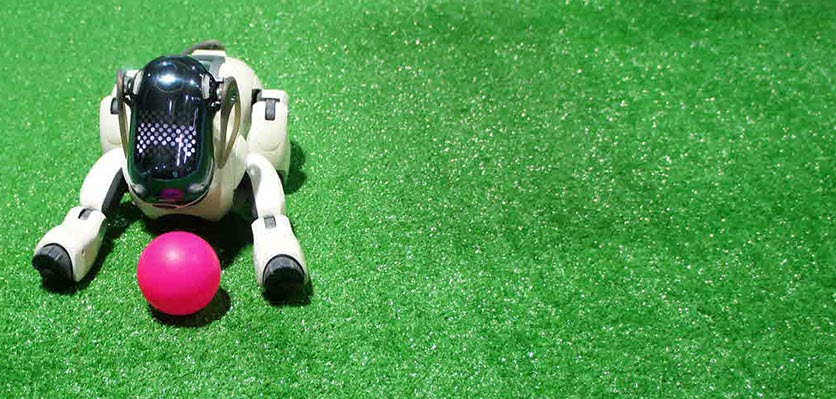
A critical role for the AVA’s Board and senior management is to watch, study and interpret trends that will influence the profession. This supports the development of plans to meet the challenges and capture the opportunities of change.
Last month I shared insights from our colleagues in the UK on the potential consequences of Brexit. Amidst the uncertainty that Brexit has created, BVA found a new opportunity to champion the interests of the profession.
Disruption has become a buzzword, often used to refer to the impact of new business models on incumbent industries. Brexit, however, demonstrates that disruption takes many forms and that our consideration of trends needs to be broad ranging.
Despite this, technology remains the trend that captures our attention. We are still watching and waiting to see which ‘Uber of veterinary practice’ emerges to reshape the landscape by connecting animal owners and veterinary care in new ways. Amazon is launching soon in Australia, joining the companies already building new models and platforms for veterinary e-commerce and logistics. There is growing activity in the development of wearable monitoring and diagnostic devices that have long-term potential to change the role of veterinarians.
Consideration of technology in the longer term, however, takes us to some more esoteric places.
In a recent TED Talk, Boston Dynamics founder and CEO Marc Raibert demonstrated ’Spot Mini’, a dog-like robot. Although Spot Mini is clearly aimed at the consumer market, the company’s work to date has been on animal-like robots specifically for military use. When they were purchased by Google in 2013, questions were raised about how this aligned with Google’s motto of ‘do no evil’.
On top of this, a video emerged of Boston Dynamics’ employees repeatedly kicking robot Spot to demonstrate its toughness. This went viral, sparking online debate about the future of robotics, the ethics of ‘cruelty to robot animals’ and the link between cruelty to robots and cruelty to animals.1
Then there is Alberta, a life-sized robotic dog made specifically to help veterinary students learn how to perform surgical procedures. The synthetic dog’s heart beats to the sound of a monitor as the surgery demonstration continues. The dog has vital organs that can be operated on or removed. The synthetic tissue feels real.
Alberta was developed by US company SynDaver Labs, whose founder developed the technology expressly to “end live animal use altogether and give synthetic canines to veterinary schools around the world.2
Ethics is a theme deeply enmeshed in both the technology dialogue and the veterinary profession. The growing development of animatronics exhibiting animal-like behaviour and physiology generates new conversations about how and why they are designed and used, then marketed to the public.
There are increasingly sophisticated robots being marketed as substitutes for the family dog and some research to show that small children treat robot dogs just as they would a real pet. Although in their current state no robot could truly substitute for the human-animal bond, technology is developing quickly and the profession should monitor this trend.
Here are a few questions posed in an article from Frontiers in Veterinary Science by Jean-Loup Rault on the development of robots as viable substitutes for pets:
- If artificial pets can replicate the human benefits obtained from live pets, does that mean that the human–animal emotional bond is solely dependent on ourselves and the image that we project on a live or artificial interactive partner?
- Does it ethically matter if the benefits of keeping artificial pets outweigh the risks, sparing other live pets’ potential animal welfare issues?
- Conversely, could artificial pets make future human generations insensitive to the treatment of live animals?
The link between robotics and animals is only one element of the technology trend that may affect veterinary science. Telemedicine; wearable technology for pets, livestock, and cattle; online sales of animal medicines; these are all firmly on our short- to medium-term radar, while the role of veterinary science in the development of nanotechnology, biotechnology and genomics is a consideration for the longer term.
These developments create risk and opportunities for the profession and for our Association. The challenge is achieving the right balance between long-term scanning and thinking and meeting the needs of our members now. Our aim is to develop pathways to future-proof the profession through education, our alliances with veterinary educators and by building new relationships with the industries of the future.
References
- Graham DA. What interacting with robots might reveal about human nature. The Atlantic. 2017. https://www.theatlantic.com/technology/archive/2017/06/kate-darling-robots-aspen/532194/. Accessed November 2017.
- Sowers L. Robotic dog allows vet student training without animal testing. Fox News. 2016. http://www.fox13news.com/news/local-news/robotic-dog-allows-vet-student-training-without-animal-testing. Accessed November 2017.
- Rault, J-L. Pets in the digital age: live, robot, or virtual? Front Vet Sci 2015;2:11. Doi.org/10.3389/fvets.2015.00011.
This article appeared in the December 2017 issue of the Australian Veterinary Journal
